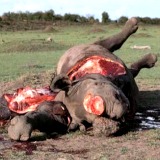Bush Babies: Africa's Enchanting Nocturnal Primates
Discover the captivating world of Africa's enigmatic bush babies—adorable creatures that captivate both nature lovers and scientists alike. These small, wide-eyed primates are famous for their extraordinary acrobatic leaps and hauntingly enchanting vocalizations.
When darkness falls, bush babies emerge as master climbers, demonstrating remarkable adaptability to African woodlands and forests.
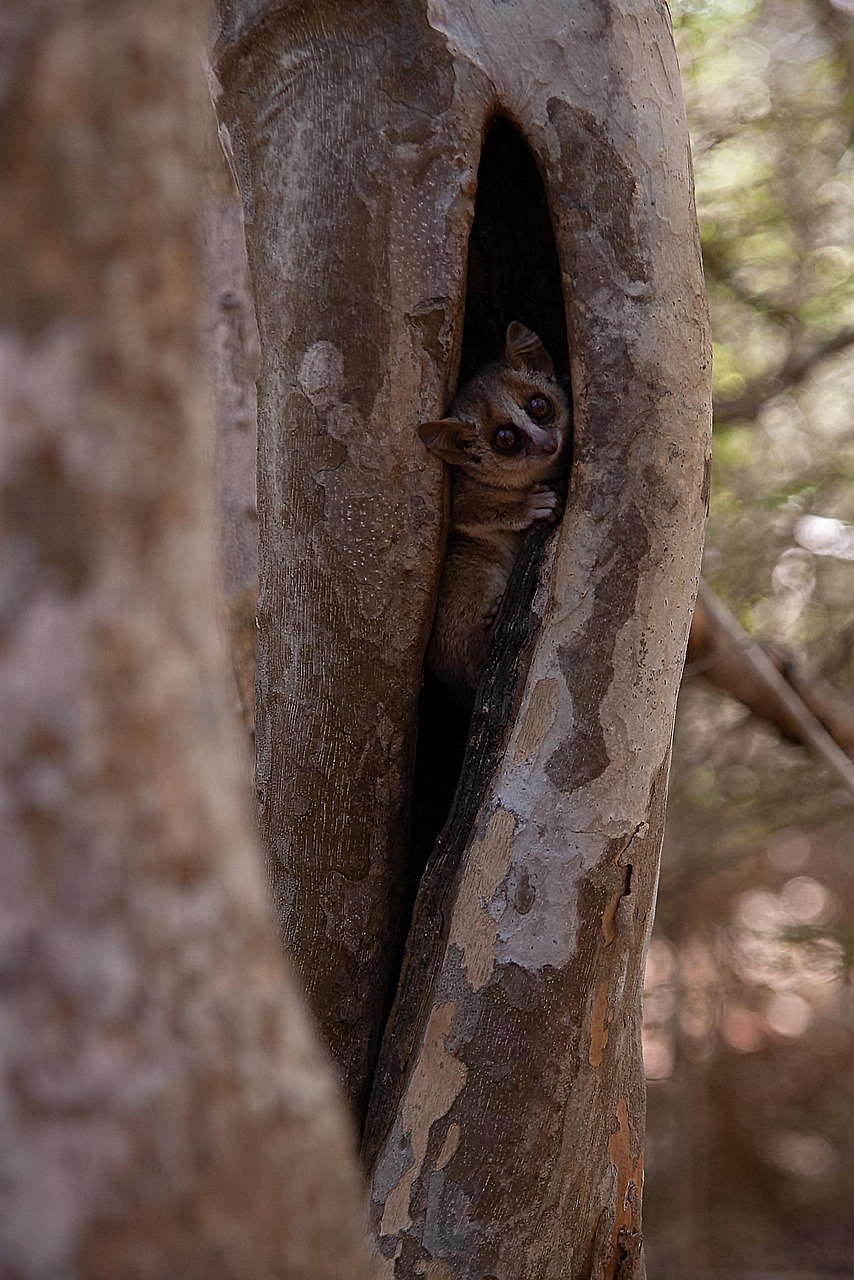 South African galago: Prefer acacia trees on the savanna
South African galago: Prefer acacia trees on the savannaWhat Are Bush Babies? The Basics
Bush babies (also known as galagos) are small, nocturnal primates that belong to the family of primitive primates related to the lemurs of Madagascar. Despite their name, which comes from their childlike wailing cry used for territorial communication and family bonding, these creatures are far more than their charming appearance suggests.
Size and Basic Characteristics:
|
Scientific name: Size: Weight: Appearance: Body structure: |
Galago senegalensis (lesser bush baby) Average length of 130 mm with tails ranging from 15–41 mm 95–300 grams (depending on species) Silver-grey to dark brown coat with a distinctive soft, thick fur Long, slender bodies with hind legs that are notably longer than their head and body |
At least 20 species of galago have been identified across Africa, each adapted to specific habitats and ecological niches.
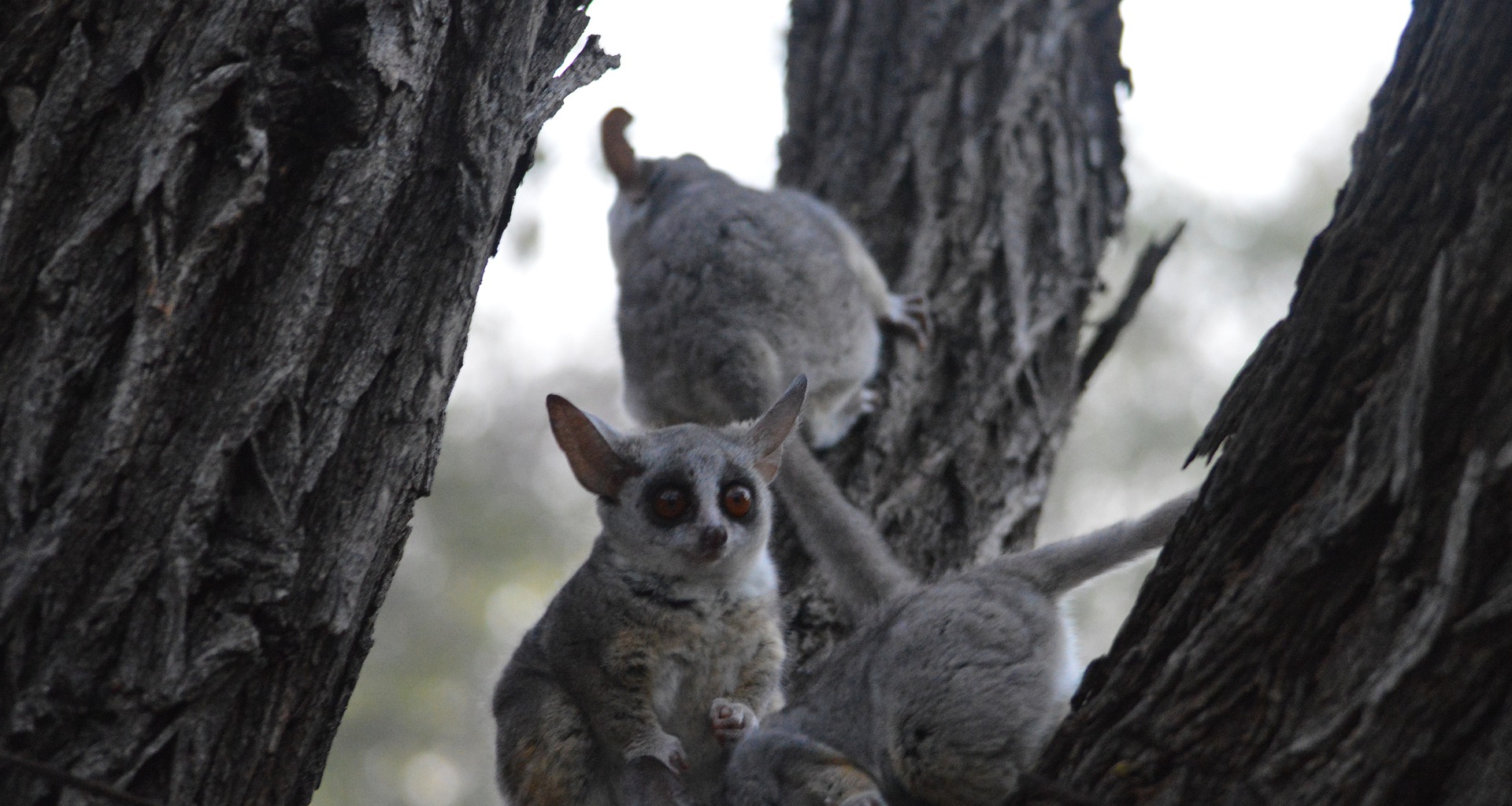 Bushbabies are primates related to the lemurs of Madagascar
Bushbabies are primates related to the lemurs of MadagascarThe Bush Baby's Extraordinary Eyes: A Night Vision Marvel
One of the most striking features of bush babies is their enormous, forward-facing eyes. These remarkable adaptations make bush babies extraordinarily effective hunters in complete darkness.
How Bush Baby Eyes Work:
Bush baby eyes cover a visual field over 50 percent wider than humans—spanning approximately 250 degrees of vision. The retina is specially designed with an abundance of light-sensitive rod cells, enabling these primates to jump between branches and catch insects in near-total darkness that would appear pitch-black to human eyes.
Interestingly, their eyes are so large relative to their head that they cannot move them in their sockets. Instead, they must turn their entire head to shift their gaze—a limitation that allows them to look directly backward over their shoulders.
This unique anatomy makes them instantly recognizable and contributes to their irresistible charm.
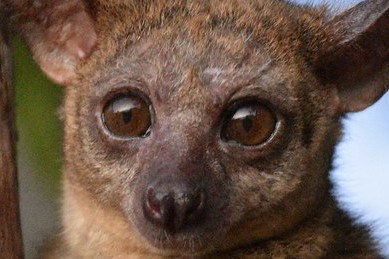 Big-eyed bush baby Big-eyed bush baby |
Bush baby eyes cover a visual field over 50 percent wider than that of humans. The retina of the eye is designed with light-sensitive rod cells. This enables them to jump between branches and catch insects in what would be pitch darkness to the human eye. |
Where Do Bush Babies Live? Geographic Distribution
Bush babies are exclusively found across sub-Saharan Africa, inhabiting diverse ecosystems suited to their specific species. Different galago species show distinct habitat preferences:
- Lesser bush babies: Thrive in forests, thickets, and savanna woodlands throughout sub-Saharan Africa
- South African galago: Prefer acacia trees on the savanna
- Thick-tailed galago: Favor tropical forests
- Somali lesser galago: Adapted to dry, thorny desert habitats
This widespread distribution demonstrates the remarkable adaptability of bush babies to various African environments, from dense forests to open savannas.
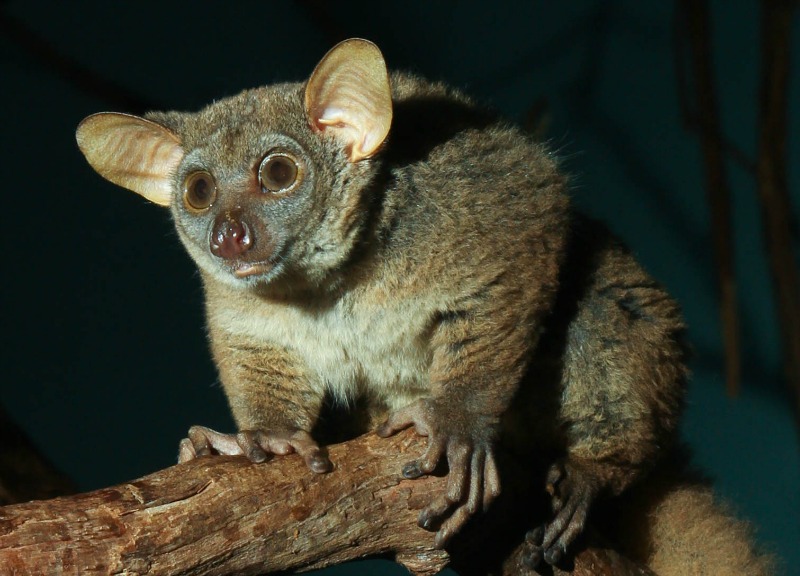 Big-eyed Bushbaby
Big-eyed BushbabyBush Baby Diet: What Do They Eat?
Bushbabies are omnivores. That means they can eat both plant and animal matter.
Bush babies are omnivores with a sophisticated and seasonally adaptive diet. Their feeding habits vary depending on food availability and season, which is key to their survival in African ecosystems.
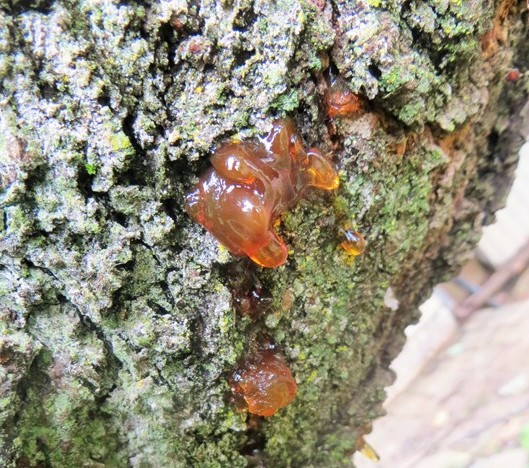 Acacia karroo tree gum favorite food of Bushbabies.
Acacia karroo tree gum favorite food of Bushbabies.Primary Food Sources:
Bush babies consume both plant and animal matter, including leaves, fruit, small insects, and acacia gum—a critical dietary component that becomes increasingly important during winter months. They are particularly fond of gum from the acacia karroo tree, which they collect as it oozes onto branch surfaces.
The lower teeth of bush babies are specially adapted to sweep gum from tree surfaces, demonstrating their specialized evolution. Acacia gum provides essential carbohydrates and represents up to a quarter of the lesser bush baby's winter diet.
Bush Baby Communication and Behavior
Bush babies are highly vocal animals despite their diminutive size, employing an extensive repertoire of sounds for communication and territorial behavior.
Vocalizations:
- Territorial call: A long-range, wailing cry that resembles a distressed human child—the origin of their common name
- Contact calls: Grunts, clicks, and crackles for family communication
- Lesser bush babies: Possess a range of at least 25 distinct calls for various contexts
- Alarm calls: Shrill whistles when responding to threats
- Mating calls: Males produce distinctive clucks while following females in heat
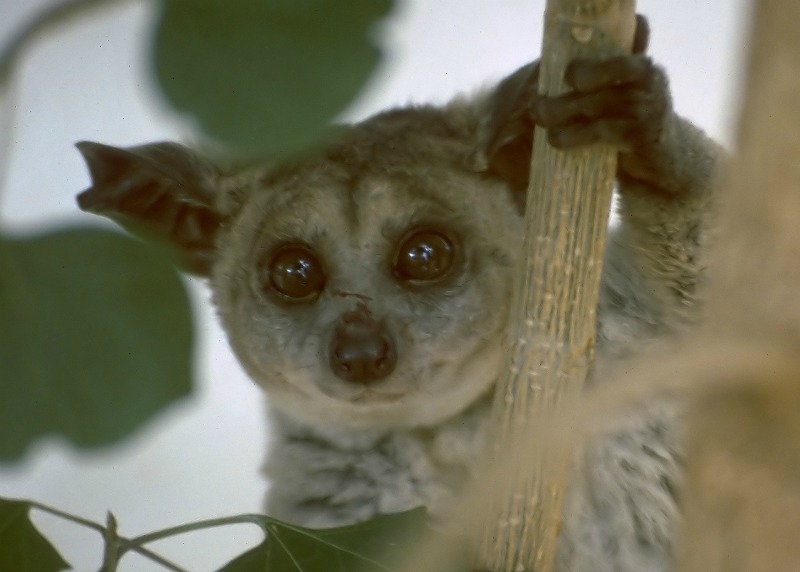 Bushbabies have large eyes to find their prey in darkness.
Bushbabies have large eyes to find their prey in darkness.Scent Marking and Urine Washing:
In addition to vocalizations, bush babies rely heavily on scent signals for communication.
They employ an unusual and elaborate scent-marking technique called "urine washing," which involves dribbling urine over their hands and feet, rubbing them together, and leaving distinctive damp, smelly foot and handprints along their pathways through the branches.
This behavior serves a dual purpose: it marks their territory while providing enhanced grip during high-velocity jumps between branches. Individual bush babies have overlapping home ranges that they further mark with chest gland secretions, creating a complex olfactory map of their territory.
Bush Baby Reproduction and Early Development
Bush baby mating behavior is complex and involves sophisticated social rituals and hierarchical interactions among males.
Mating Process:
Males assess the reproductive condition of females through olfactory investigation. During the mating season, male bush babies engage in fierce territorial combat, with losers facing potential fatal injuries if they cannot escape. Females on heat initially respond with aggression to male advances but eventually allow mating to occur repeatedly for approximately five minutes every two hours during receptive periods.
Maternal Care and Development:
First three days: Mother remains continuously with newborns
Six weeks: Young are weaned from maternal milk
Two months: Young achieve independence from their mother
Dispersal: Young males typically disperse several kilometers from their birthplace, while females often remain within their natal group
This pattern of development ensures young bush babies have sufficient time to learn essential survival skills before independence.
Who are their biggest enemies in the wild?
They are preyed on by large owl species, snakes, servals, African wild cats, and genets.
What is the difference between the thick-tailed bush babies and the lesser bush baby?
The thick-tailed version is more than twice as large and eight times heavier than the lesser Bushbaby.
It also has a more pointed face and a longer, bushier tail.
Thick-tailed Bushbabies are exceptionally
agile climbers and leapers.
They live in groups of two to six, consisting of an adult male with females and their young.
They sleep together in thick foliage up to 12 m above the ground.
They usually forage alone but in fruit clusters will feed together in groups where they tolerate each other.
They will even occasionally indulge in grooming sessions.
These interactions are most common during summer when food is more abundant and there is less competition because it is outside the mating season.
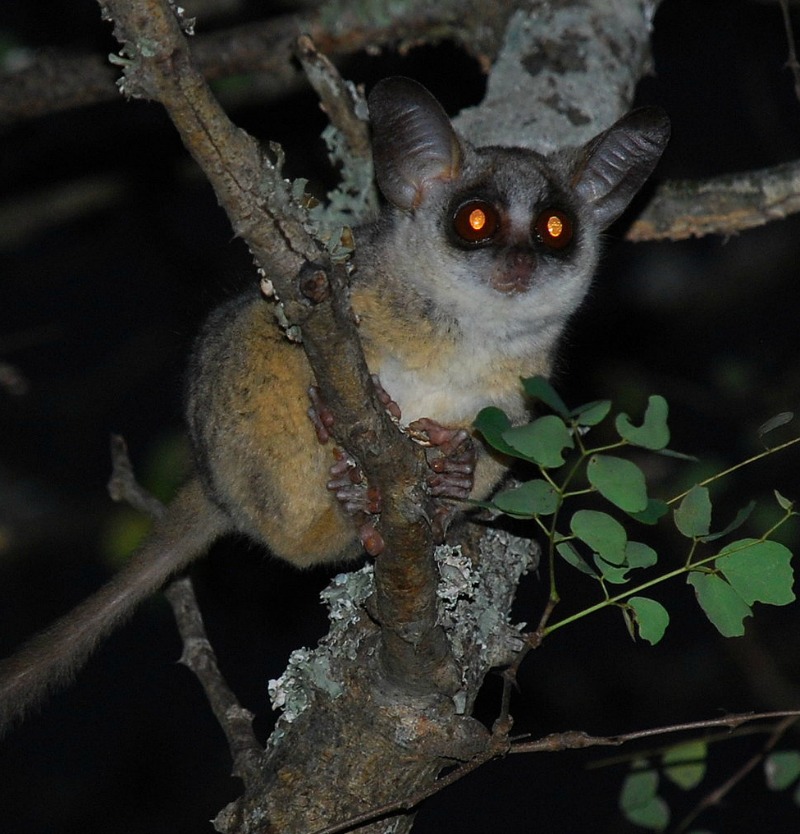 A Bushbaby's eyes cannot move in their sockets.
A Bushbaby's eyes cannot move in their sockets.Thick-tailed Bushbabies walk along branches whereas lesser Bushbabies hop and jump more freely.
Lesser Bushbabies have a range of at least 25 calls.
They cluck and chatter when encountering intruders.
The alarm call is a shrill whistle and males cluck when following a female on heat.

